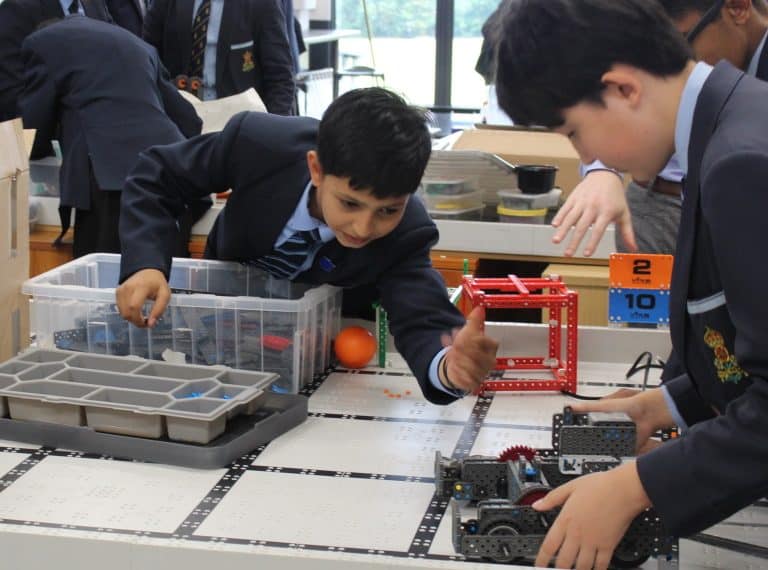
QE’s new robotics suite is already proving a major hit with the boys, after being opened at the start of term.
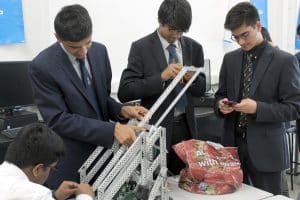 The dedicated facility in the Technology corridor has been created in a large former changing room and fully equipped to help young roboteers develop their skills.
The dedicated facility in the Technology corridor has been created in a large former changing room and fully equipped to help young roboteers develop their skills.
It is expected that QE will field a record number of robotics teams – possibly as many as ten – in the 2019-2020 season, so the room is constantly busy before and after school, as well as at breaktimes and lunch.
This will be only the fourth year in which QE has been involved in the VEX robotics competitions, yet the School has very quickly made its mark on the world stage. In 2017, two teams won places at  the international finals in Kentucky at the first attempt; in 2018, QE became the first-ever UK school to win a world title, and last academic year a record four junior VEX IQ) and one senior (VEX EDR) teams picked up a string of awards in the US, with one becoming the first UK team ever to reach the competition’s Teamwork Challenge finals.
the international finals in Kentucky at the first attempt; in 2018, QE became the first-ever UK school to win a world title, and last academic year a record four junior VEX IQ) and one senior (VEX EDR) teams picked up a string of awards in the US, with one becoming the first UK team ever to reach the competition’s Teamwork Challenge finals.
QE’s Head of Technology teacher Michael Noonan said: “Enthusiasm for robotics here is extremely strong, so we are delighted to be able to offer the boys a dedicated facility, which includes the School’s first permanent EDR field as well as two raised permanent IQ fields.
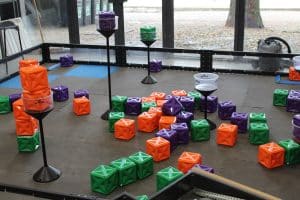 “We’re all looking forward to another great year of competition nationally and, hopefully, internationally,” added Mr Noonan, who won the Teacher of the Year Award at last year’s UK VEX robotics finals in Telford.
“We’re all looking forward to another great year of competition nationally and, hopefully, internationally,” added Mr Noonan, who won the Teacher of the Year Award at last year’s UK VEX robotics finals in Telford.
In addition to the new IQ and EDR fields, the suite features:
- A new smartboard for displaying real-time game information;
- Six desktop computers for CAD and Design applications
- A breakout space with two whiteboards, to spur creative discussions
- A library of books, resources and past designs
- Ample storage space
- Wireless internet
- And a display area for QE’s rapidly growing collection of trophies!

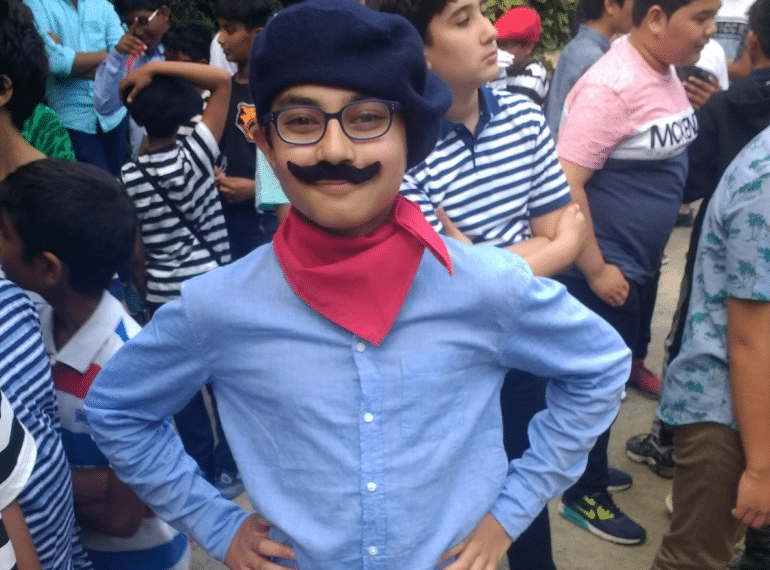
 Forty of last year’s Year 7 pupils enjoyed a range of fun activities at the Château de la Baudonnière, near Avranches, with all the instructions for these – and for mealtimes – given in French.
Forty of last year’s Year 7 pupils enjoyed a range of fun activities at the Château de la Baudonnière, near Avranches, with all the instructions for these – and for mealtimes – given in French. Languages teacher Rebecca Grundy said: “We aim for a completely immersive experience to give the boys some intensive help with their language-learning, while making sure they learn something of the culture and history of Normandy and France.”
Languages teacher Rebecca Grundy said: “We aim for a completely immersive experience to give the boys some intensive help with their language-learning, while making sure they learn something of the culture and history of Normandy and France.”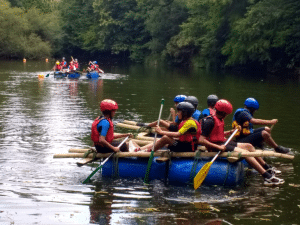 On a day out, the younger boys visited two Norman cities of historical importance, Arromanches and Bayeux.
On a day out, the younger boys visited two Norman cities of historical importance, Arromanches and Bayeux.
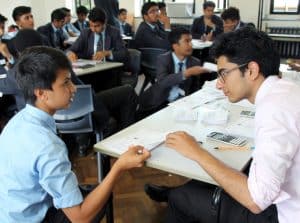 Economics teacher Krishna Shah said: “This was a great alternative to normal Economics lessons, and the boys appreciated getting away from ‘boring’ essay-writing! The morning gave them an opportunity to experience the pressure of a real trading floor and apply their understanding of supply and demand to a real-life situation. Not only did they gain an insight into the atmosphere of a real trading floor, but they also developed skills such as teamwork, analytical thinking, leadership, decision-making and risk management.
Economics teacher Krishna Shah said: “This was a great alternative to normal Economics lessons, and the boys appreciated getting away from ‘boring’ essay-writing! The morning gave them an opportunity to experience the pressure of a real trading floor and apply their understanding of supply and demand to a real-life situation. Not only did they gain an insight into the atmosphere of a real trading floor, but they also developed skills such as teamwork, analytical thinking, leadership, decision-making and risk management.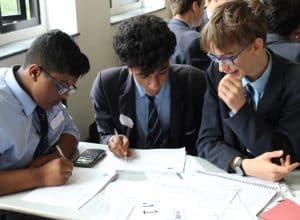 The boys could buy and sell shares in nine companies and also buy the dollar. They had to make decisions about which companies would increase in market value and which would lose out, based on media reports from newspaper, radio and TV briefings.
The boys could buy and sell shares in nine companies and also buy the dollar. They had to make decisions about which companies would increase in market value and which would lose out, based on media reports from newspaper, radio and TV briefings.
 All 180 members of Year 10 were involved in the competition, which was held by the Art department as part of QE’s Enrichment Week.
All 180 members of Year 10 were involved in the competition, which was held by the Art department as part of QE’s Enrichment Week. The entries created over the two days included models of museums, airports and mosques.
The entries created over the two days included models of museums, airports and mosques.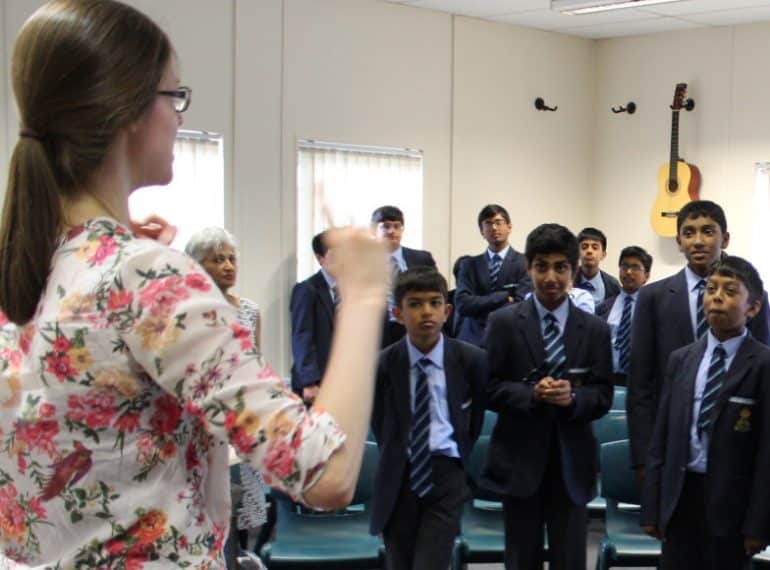
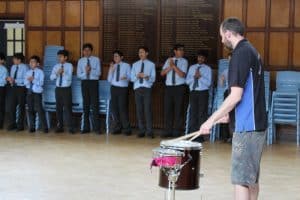 In a two-hour Body Percussion workshop led by experts from music and dance organisation Inspire-works, pupils were shown how to produce exciting rhythms and sounds by stamping their feet on the floor, patting thighs with open palms, clicking fingers, clapping hands and patting or knocking their chest.
In a two-hour Body Percussion workshop led by experts from music and dance organisation Inspire-works, pupils were shown how to produce exciting rhythms and sounds by stamping their feet on the floor, patting thighs with open palms, clicking fingers, clapping hands and patting or knocking their chest.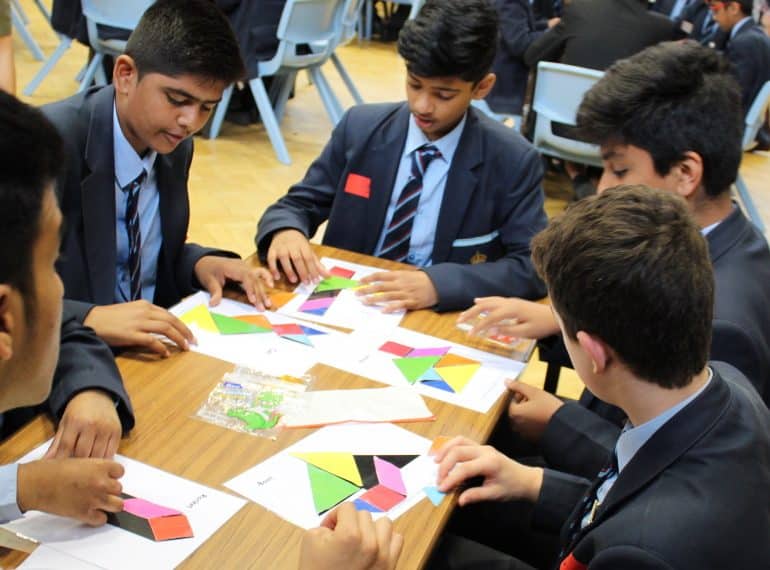
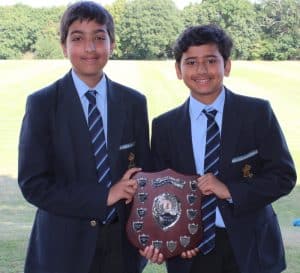 es, some of which are more familiar problem-solving (such as the round entitled A Question of Maths), while others major on the practical (such as tangrams, which involve putting together seven flat shapes to create a specified shape).
es, some of which are more familiar problem-solving (such as the round entitled A Question of Maths), while others major on the practical (such as tangrams, which involve putting together seven flat shapes to create a specified shape).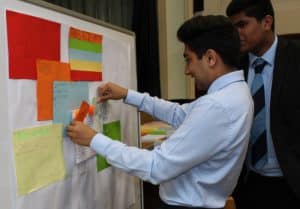 “From electricity to football, Maths is all around us. Winning the Maths Fair is an unforgettable achievement,” said Haris Shahid from Pearce.
“From electricity to football, Maths is all around us. Winning the Maths Fair is an unforgettable achievement,” said Haris Shahid from Pearce.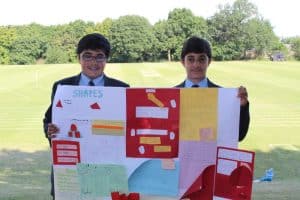 All six Houses were also required to create a poster entitled What is Mathematics? Each of the multiple teams within each house had to create a part of the poster. They were asked to prepare in advance by coordinating the different sections so that their poster would encompass the many facets of Mathematics.
All six Houses were also required to create a poster entitled What is Mathematics? Each of the multiple teams within each house had to create a part of the poster. They were asked to prepare in advance by coordinating the different sections so that their poster would encompass the many facets of Mathematics.